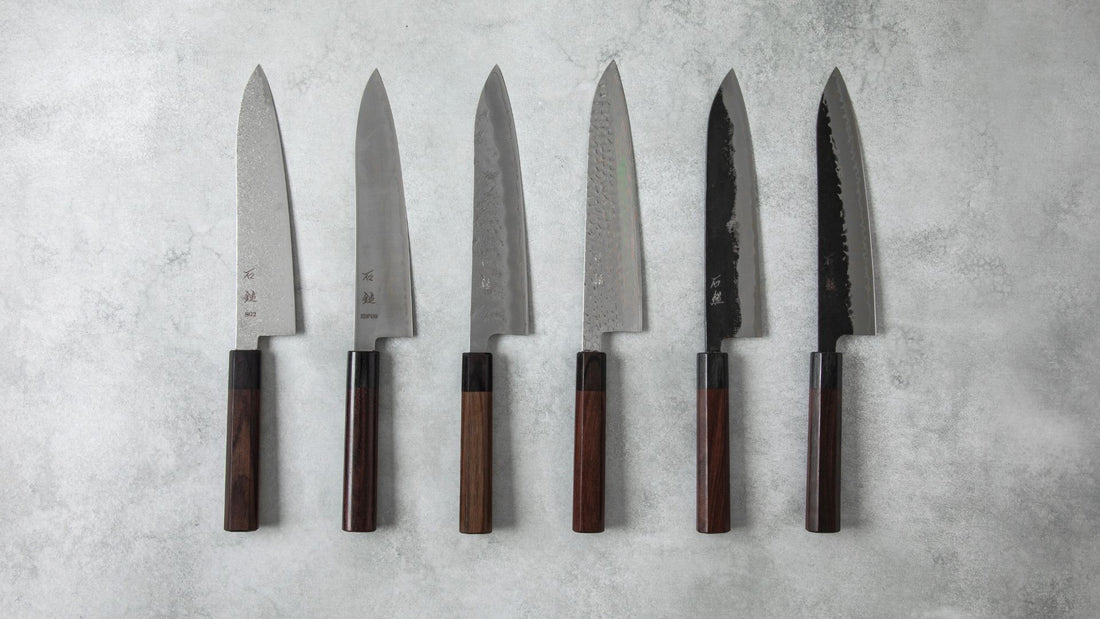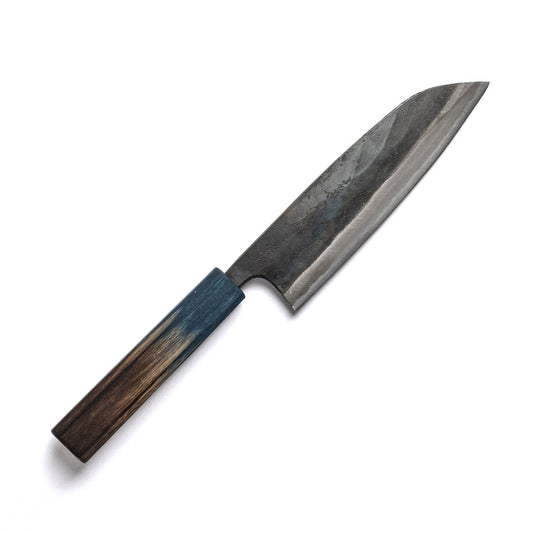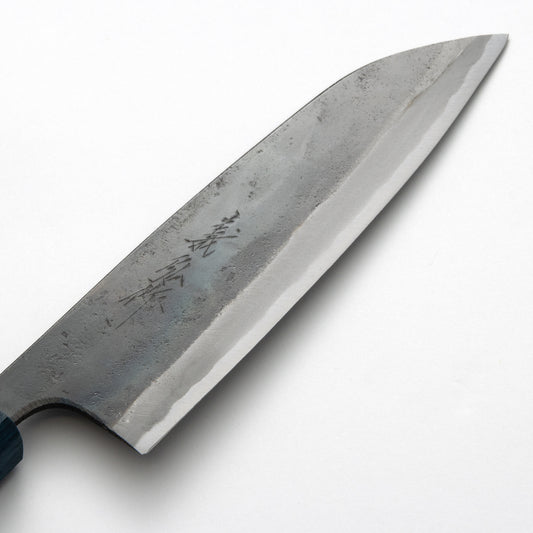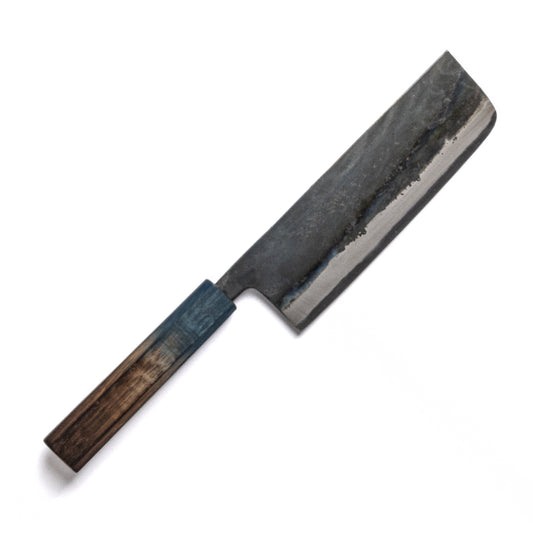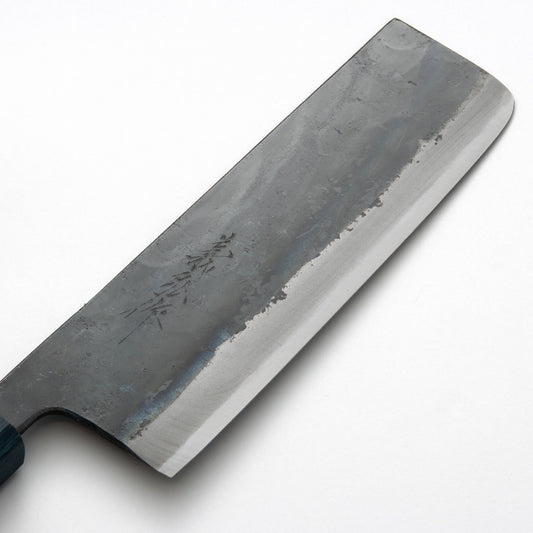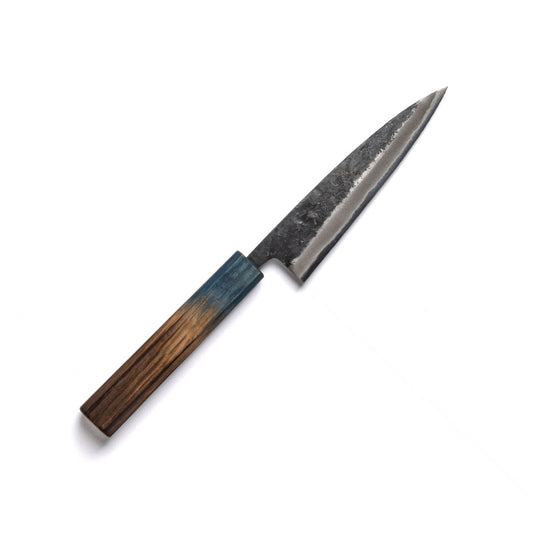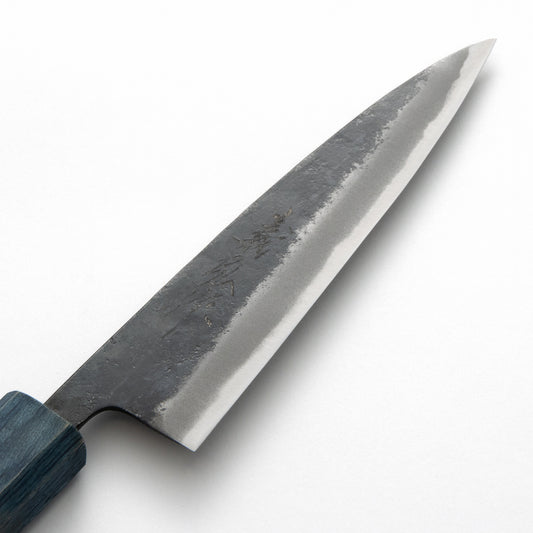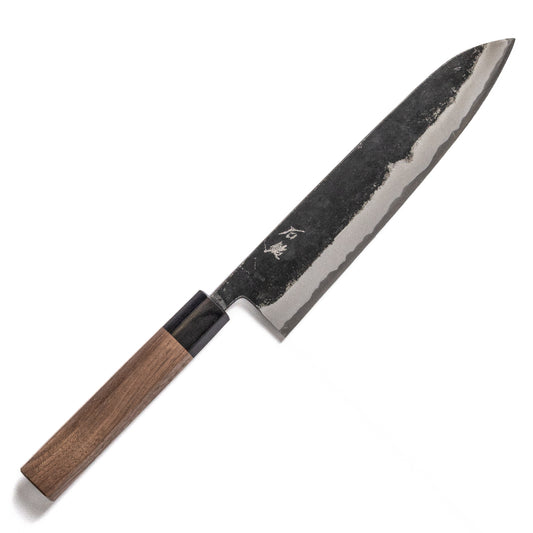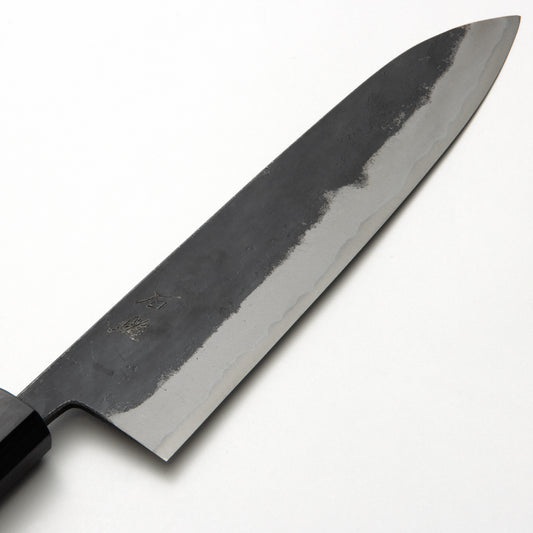The world of Japanese knives is a realm of exquisite craftsmanship and unparalleled sharpness. Unlike their Western counterparts, Japanese knives prioritize precision and finesse, making them ideal for delicate slicing and intricate cuts. But what truly sets them apart lies in the exceptional steel and traditional techniques employed in their creation.
This comprehensive guide aims to provide everything you need to know about the most common Japanese knife steel types and forging techniques, empowering you to choose the perfect blade for your kitchen.
Contents
- Japanese Knife Steel Types
- Traditional Japanese Forging Techniques
- Why Japanese Knives Excel And You Should Own One
- In Conclusion
Japanese Knife Steel Types

Now, let's delve deeper into the soul of the blade - the various kinds of Japanese knife steel types that you may come across online. Each offers unique properties to help your kitchen prep become a breeze.
- Blue Super Steel (Aogami Super): Renowned for its exceptional edge retention and razor-like sharpness, Blue Super Steel is a high-carbon, high-chromium steel revered by professional chefs. It requires more maintenance due to its higher carbon content but rewards patient users with unparalleled cutting performance.
- Blue Steel No.2 (Aogami #2): Offering a slightly softer alternative to Blue Super Steel, Aogami #2 strikes a balance between edge retention and ease of sharpening. This steel is a popular choice for home cooks seeking a high-performance blade with a more forgiving nature.
- SG2 (R2): A powdered metallurgy steel known for its extreme hardness and phenomenal edge retention, SG2 pushes the boundaries of cutting performance. Be aware, however, that its high hardness can make it a more challenging to sharpen and care for long term for beginners.
- ZDP189: Another powdered metallurgy marvel, ZDP189 boasts the highest Rockwell Hardness (HRC) rating among commonly used knife steels. This translates to unmatched edge retention and minimal chipping, making it a favorite among professional chefs seeking the ultimate cutting experience.
- VG10: A versatile and well-balanced steel, VG10 offers good edge retention, a good degree of rust resistance, and relative ease of sharpening. It's a popular choice for everyday use due to its affordability and user-friendliness.
- VG5 Gold Clad: A variant of VG10, VG5 Gold Clad utilizes a softer stainless steel cladding around the core VG10 steel. This provides added rust resistance while maintaining the core's cutting performance.
- SKD11: A high-carbon, high-chromium tool steel, SKD11 offers excellent edge retention and wear resistance. Similar to Blue Super Steel, due to the high carbon content, a bit more maintenance may needed to ensure these stunning knives keep their sheen.
- White Steel No.2 (Shirogami #2): A pure carbon steel known for its incredible sharpness and ease of sharpening, White Steel #2 requires the most maintenance due to its high reactivity. This steel is prized by purists for its traditional feel and exceptional cutting ability.
Traditional Japanese Forging Techniques
The brilliance of Japanese knives extends beyond the steel itself, espectially when combined with the techniques of handforging knives. Next, we will take a look at some of the most common traditional forging techniques that imbue these blades with not only breathtaking beauty but also enhanced functionality.
- Damascus: This visually stunning technique involves layering different steels together, resulting in a beautiful, wave-like pattern. While Damascus cladding doesn't significantly impact cutting performance, it enhances rust resistance and adds a touch of luxury. Definitely a knife that excels in terms of both usability and display potential.
- Tsuchime (Hammered Finish): This hammering technique creates a textured surface on the blade. Tsuchime not only adds visual appeal but also helps to reduce food sticking by creating tiny air pockets. This technique is particularly useful for knives used with sticky ingredients like vegetables, such as Nakiri knives.
- Nashiji (Pear Skin Finish): A beautiful and subtle textured finish resembling pear skin, Nashiji blades offer improved grip and helps to reduce glare on the blade's surface. This technique is often used on high-end knives for its aesthetic appeal and practical benefits.
- Kuro (Black Blade Finish): A kuro, kurouchi, or kurohada finish, also known as a blacksmith finish, is a classic technique used to give knives a unique look. By using charcoal to polish the blade, a dark and textured surface is created. This finish not only enhances the appearance of the knife with a matte finish but also helps in retaining food oils and prevents rusting.
Why Japanese Knives Excel And You Should Own One
The combination of superior steel and traditional forging techniques allows Japanese knives to have benefits far beyond their standard counterparts. Here are just a few of the reasons why:
- Exceptional Edge Retention: Japanese steels, particularly high-carbon steels, hold an edge for significantly longer, reducing the frequency of sharpening.
- Unparalleled Sharpness: These specialized steels allow for incredibly thin and sharp blades, resulting in precise and effortless cutting.
- Enhanced Flexibility: Many Japanese knives boast a degree of flexibility, allowing for controlled slicing and minimizing the risk of tearing delicate ingredients.
-
Rust Resistance: While some high-carbon steels require a little more long-term care, several Japanese steels offer good to excellent rust resistance for practical everyday use.
In Conclusion
Japanese knives are a testament to centuries-old tradition and meticulous craftsmanship. By understanding the various steel types and forging techniques, you can make an informed decision when selecting the perfect blade to whether you're a professional chef or a home cooks alike.
From the unparalleled sharpness of Blue Super Steel to the versatility of VG10, there's a Japanese knife waiting to become your trusted new tool in the kitchen.


